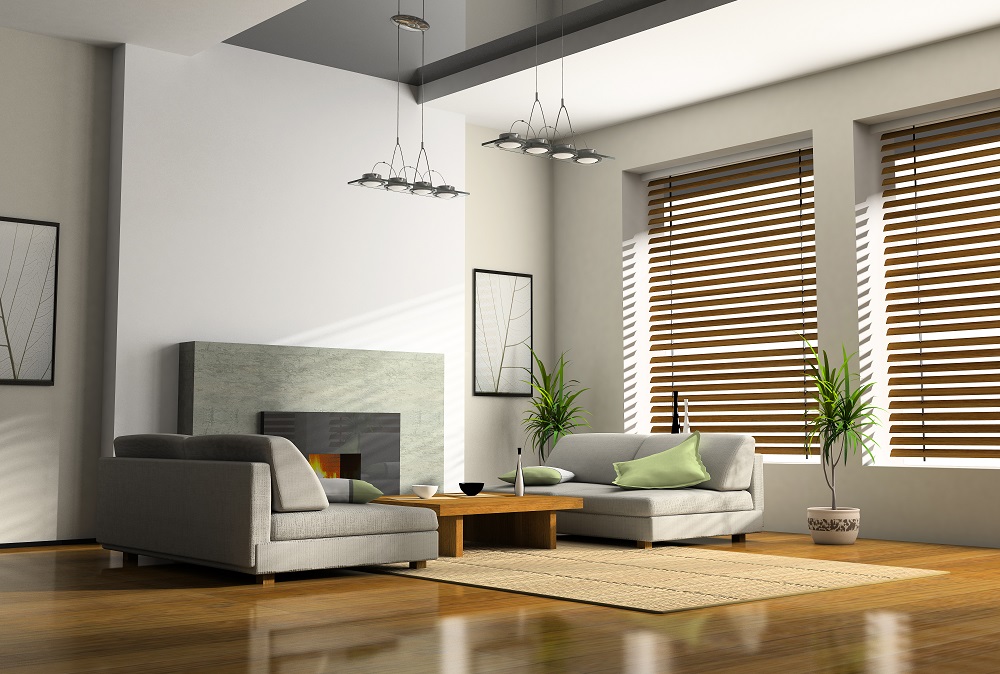Selecting the right window blinds can significantly enhance the aesthetics and functionality of a room. The key is to find blinds that suit your space and serve your specific needs for various areas in your home. In this article, we’ll explore five essential tips for choosing blinds for every room’s windows, highlighting various blind types and their distinct features. Whether you’re looking for optimal light control, privacy, or a decorative touch, these tips will help you make informed decisions and choose the blinds that best fit all your needs.
Consider Your Privacy Needs
Privacy is a crucial factor when choosing blinds for your windows. Some rooms require more privacy than others, such as bedrooms and bathrooms. For these spaces, it’s essential to opt for blinds that can completely block out the view from the outside. Venetian blinds, roller blinds, and cellular shades are excellent choices when privacy is a top priority. Venetian blinds, in particular, offer the versatility of adjusting the angle of the slats to control both privacy and light levels effectively.
Venetian blinds are one of the most versatile and timeless choices for window coverings. They come in many different materials, including wood, faux wood, aluminum, and vinyl, offering a wide range of customization options. Similarly, Roman blinds could be an excellent alternative, as they’re also well-known for keeping thousands of satisfied homeowners safe from prying eyes. However, keep in mind that Roman blinds are more suitable for living rooms, or dining spaces, as these areas are not exposed to excessive moisture.
Match Blinds to Your Interior Style
The aesthetics of your blinds should harmonize with your room’s interior design. You can find blinds in many colors and materials, and choosing the right one can enhance the overall ambiance. Coordinating blinds with your interior style ensures they seamlessly blend into the room’s overall theme. This integration makes the blinds feel like a natural extension of the decor rather than an afterthought.
Roller blinds offer several compelling benefits for homeowners and interior designers. They provide excellent light control, allowing you to effortlessly adjust the level of natural light in a room, from full brightness to complete blackout. Roller blinds are also known for their sleek and minimalist design, making them a versatile choice that can seamlessly fit into various interior styles.
Ensure Easy Maintenance
Blinds require regular cleaning and maintenance to keep them looking their best. Some blinds are easier to clean and maintain than others. If you want low-maintenance blinds, consider options like faux wood blinds or vertical blinds. Faux wood blinds are more resistant to moisture and are easier to clean than real wood blinds. Vertical blinds are also easy to maintain and less prone to collecting dust compared to horizontal blinds.
Vertical blinds are the perfect choice for windows and glass doors for any room in your home. They have slats that can be tilted to control light and privacy. Vertical blinds are specifically designed for larger windows and doors, making them a practical choice for living rooms, offices, and patios.
Installing vertical blinds can be a bit more involved due to their size. They are usually mounted on the wall above or inside the window frame. For doors and windows, professional installation is recommended to ensure they operate smoothly. If you don’t want to deal with this challenge, Roman or roller blinds are great alternatives.
Control Light and Sun Glare
Controlling the amount of natural light that enters a room is another important consideration when choosing blinds. Some rooms may require more light, while others may need to reduce glare and harsh sunlight. If you want to have precise control over light levels, consider vertical blinds, which allow you to adapt the angle and orientation of the slats to direct light where you want it. For rooms where you want to filter and soften incoming light, translucent roller blinds or Roman shades can be an excellent choice.
Roman blinds offer an elegant and soft window covering option that creates a sophisticated atmosphere in any room. They are made from a piece of fabric that stacks neatly as it is raised.
Roman blinds can be tailored to fit various window sizes, making them a versatile choice for all rooms in your home. Versatile Roman blinds are ideal for controlling the amount of natural light, and they can be the focal point of your room or blend seamlessly with the surroundings. This makes them an ideal choice for bedrooms, too.
Prioritise Energy Efficiency
Energy efficiency is a crucial factor in modern home design. Blinds can play a significant role in regulating temperature and reducing energy consumption. To enhance the energy efficiency of your home, go for cellular or honeycomb blinds. These blinds feature a unique cellular structure that traps air, providing insulation against heat or cold. This can help reduce your heating and cooling costs while keeping your room comfortable.
Cellular or honeycomb blinds are best known for their energy-efficient properties. They’re also versatile and can be customized to fit various window sizes, from small bedroom windows to large living room ones. If you opt for honeycomb blinds, you’ll be able to choose from a variety of colors and opacities, allowing you to find the optimal level of light and privacy that suits your needs. They also offer a clean, modern appearance, and more importantly, they will help you save energy all year round.
Conclusion
In conclusion, the choice of blinds for your windows should take into account your specific needs and priorities for each room. Consider the level of privacy, light control, interior style, maintenance, and energy efficiency you desire, and then choose blinds that align with these objectives.
So, when looking for new blinds for your home, be sure to take into account all these factors and mindfully select the appropriate solution for each room. Bathroom blinds will require more maintenance, while the living room blinds should be chosen based on other factors, such as light control and the level of privacy.

